Neuromodulation, Comprehensive Textbook of Principles, Technologies, and Therapies

DESCRIPTION
Neuromodulation: Comprehensive Textbook of Principles, Technologies, and Therapies, Second Edition, serves as a comprehensive and in-depth reference textbook covering all aspects of the rapidly growing field of neuromodulation. Since the publication of the first edition seven years ago, there has been an explosion of knowledge in neuromodulation, optogenetics, bioelectronics medicine and brain computer interfacing. Users will find unique discussions of the fundamental principles of neuromodulation and therapies, and how they are applied to the brain, spinal cord, peripheral nerves, autonomic nerves and various organs.
The book focuses on comprehensive coverage of spinal cord stimulation, non-interventional and interventional brain stimulation, peripheral nerve stimulation, and the emerging fields of neuromodulation, including optogenetics and bioelectronics medicine.
Key Features
- Provides a comprehensive reference that covers all aspects of the growing field of neuromodulation
- Written by international, leading authorities in their respective fields of neuromodulation, pain management, functional neurosurgery and biomedical engineering
- Includes new chapters on optogenetics, bioelectronics medicine and brain computer interfacing
Readership
Advanced graduate students, researchers, and clinicians in the fields of neuroscience, neurology, neurosurgery, psychiatry, and biomedical engineering
Table of Contents
Volume 1:
SECTION I: Defining Neuromodulation
1. Perspectives on the History of the Neuromodulation Societies
2. Psychological Issues and Evaluation for Patients Undergoing Implantable Technology
3. Relevant Anatomy of the Nervous System to Neuromodulation (central, peripheral, autonomic-Vagus)
4. Clinical Study Designs for Neuromodulation
SECTION II: The Brain Initiative—Implications for a Revolutionary Change in Clinical Medicine via Neuromodulation Technology
5. The Brain Initiative—Implications for a Revolutionary Change in Clinical Medicine via Neuromodulation Technology
SECTION III: FUNDAMENTALS AND MECHANISMS OF NEUROMODULATION
6. Fundamentals of Electrical Stimulation
7. The Safe Delivery of Electrical Currents and Neuromodulation
8. The Role of Wave Forms for Electrical Stimulation of the Nervous System
9. Neuromodulation and Neuronal Plasticity
10. Fundamentals of High Frequency Nerve Conduction Block of the Peripheral Nervous System
11. MRI and fMRI for Neuromodulation Vibhor Krishna
12. Computational Modeling of Deep Brain Stimulation
13. Computational Modeling of Deep Brain Stimulation – Neurotargeting
14. Fundamentals of Burst Stimulation of the Spinal Cord and Brain
15. Mechanisms of Action of Spinal Cord Stimulation for Pain (Traditional, Dorsal Root Spinal Stimulation, kHz frequency stimulation
16. Fundamentals and Mechanisms of Dorsal Root Ganglion (DRG) Stimulation
17. Mechanisms of Action of Deep Brain Stimulation
18. Mechanisms of Action of Vagal Nerve Stimulation
19. Mechanisms of Action of Sacral Nerve Stimulation for Disorders of Bladder and bowel
SECTION IV: TECHNOLOGY AND DEVICES
20. Electrodes for Recording and Stimulating the Peripheral Neural Interface
21. Implantable Neural Stimulators: Powering, Control and Packaging
22. Microstimulators
23. Designing Neuromodulation Systems For Feedback Control
24. MRI Safety and Neuromodulation Systems
SECTION V: BRAIN, COMPUTER AND MACHINE INTERFACING
25. Brain Computer Interfaces: Why Not Better?
26. Non-Invasive BCI
27. Invasive BCI
28. Prospects for a robust cortical recording interface
29. Brain Machine Interfacing—Signal Processing, and extraction of signals
SECTION VI: EMERGING TECHNOLOGIES AND TECHNIQUES
30. Gene-Based Neuromodulation
31. Focused Ultrasound
32. Implanted Sensors in Neuromodulation via Electrical Stimulation
33. Neurogaming
34. The Use of New Surgical Technologies for Deep Brain Stimulation (ultrasound, atlases, MRI)
35. Neuromodulation Using Optogenetics and Related Technologies
SECTION VII: SURGICAL PROCEDURES AND TECHNIQUES
36. Deep Brain Stimulation: Surgical Technique
37. Spinal Cord Stimulation: Placement of Surgical Leads via Laminotomy Techniques and Benefits
38. Subcutaneous Peripheral Nerve Field Stimulation for Intractable Pain
39. Surgical Placement of Leads for Occipital Nerve Stimulation
40. Intrathecal Medication Delivery System Implantation
41. Neuroprosthetic Surgical Strategies for Neuromuscular Stimulation
42. The Surgical Technique of Vagus Nerve Stimulator Implantation
VOLUME 2
SECTION VIII: NEUROMODULATION FOR PAIN CONTROL
SECTION VIII A: SPINAL CORD STIMULATION FOR PAIN CONTROL
43. Physiology and Pathophysiology of Chronic Pain
44. Management Strategies for Chronic Pain
45. History of Spinal Cord Stimulation
46. Functional Magnetic Resonance Imaging in the Neuromodulation of Pain
47. The Development of Algorithms for Pain Care including Neuromodulation Therapies: Introducing the SAFE Principle
48. Neurostimulation for the Treatment of Complex Regional Pain Syndrome
49. Spinal Cord Stimulation for Peripheral Neuropathic Pain
50. Spinal Cord Stimulation for the Treatment of Low Back Pain
51. Spinal Cord Stimulations: Complications and Management
52. Clinical Aspects of Burst stimulation for Pain Control
53. DRG stimulation for Pain Control
54. High Frequency Stimulation of the Spinal Cord for Pain Control
55. A Review of Spinal Cord Stimulation Cost Studies
SECTION VIII B: PERIPHERAL NERVE STIMULATION FOR PAIN CONTROL INTRODUCTION: PERIPHERAL NERVE STIMULATION FOR PAIN CONTROL
56. Anatomy and Physiology Related to Peripheral Nerve Stimulation
57. Peripheral Nerve Stimulation for Pain Suppression
58. Peripheral Nerve Stimulation for Facial Pain
59. Combined Spinal Cord Stimulation and Peripheral Field Stimulation for the Treatment of Chronic Back and Neck Pain
60. Percutaneous Peripheral Nerve Stimulation for the Management of Acute Post-Operative Pain
61. Peripheral Nerve Field Stimulation for intractable pain
62. Occipital Neurostimulation for Treatment of Intractable Headache Syndromes
63. Neurostimulation for Headaches—Sphenopalatine Ganglion Stimulation
SECTION VIII C: INTRATHECAL THERAPIES FOR PAIN CONTROL AND THE CONTROL OF SPASTICITY
64. Relevant Anatomy for Spinal Delivery
65. Evolution of the Spinal Delivery of Opiate Analgesics
66. Pharmacology of Intrathecal Therapy
67. Cerebrospinal Fluid Dynamics and Intrathecal Delivery
68. Exploring Non-Opioid Analgesic Agents for Intrathecal Use
69. New Molecules for Intrathecal Delivery for Pain Control
70. The Development of Guidelines for Intrathecal Therapies for Pain Control: History and Present Guidelines
71. Compounding Intrathecal Analgesic Agents
72. Intrathecal Baclofen for Control of Spasticity
SECTION VIII D: INTRACRANIAL PROCEDURES FOR CHRONIC PAIN
73. Deep Brain Stimulation for Pain
SECTION IX: NEUROMODULATION FOR MOVEMENT DISORDERS
74. Deep Brain Stimulation for Parkinson’s Disease
75. Deep Brain Stimulation for Tremor
76. Deep Brain Stimulation for Torsion Dystonia
77. Deep Brain Stimulation for Tourette Syndrome
78. Surgical Management of Hemifacial Spasm and Meige Syndrome
79. Deep Brain Stimulation of the Pedunculopontine Tegmental Nucleus improves static balance in Parkinson’s Disease
80. Infusion Therapy for Movement Disorders
SECTION X: NEUROSTIMULATION FOR EPILEPSY
81. Epilepsy: Anatomy, Physiology, Pathophysiology, and Disorders
82. Vagus Nerve Stimulation for Epilepsy
83. Deep Brain Stimulation for Epilepsy
84. Closed loop Responsive stimulation for Epilepsy
SECTION XI: NEUROMODULATION FOR BEHAVIORAL AND COGNITIVE DISORDERS
85. Electrical Brain Stimulation for Treatment-Resistant Obsessive–Compulsive Disorder
86. High-Intensity Focused Ultrasound Surgery for the Treatment of Obsessive-Compulsive Disorder
87. Deep Brain Stimulation for Highly Refractory Depression
88. Neuromodulation for Anorexia
89. Deep Brain Stimulation for Alcoholism
90. Surgical Treatment for Refractory Drug Addictions
91. Subgenual Cingulate Deep Brain Stimulation for Treatment-Resistant Depression
92. Cortical Stimulation for Depression
VOLUME 3
SECTION XII: NEUROMODULATION FOR FUNCTIONAL RESTORATION
93. The History of Neuromuscular Electrical Stimulation
94. Stimulation for Return of Function after Stroke
95. Invasive Neurostimulation for Post Stroke Motor Recovery
96. Stimulation for Return of Upper Extremity Function
97. Lower Extgremity Motor System Neuroprostheses
98. Neuromodulation of the Spinal Cord for Movement Restoration
99. A brief history of the cochlear implant and related treatments
100. Stimulation for the Return of Hearing
101. The Development of Visual Prosthetic Devices to Restore Vision to the Blind
102. Neuromodulation for Treatment of Dry Eye
103. Restoration of Tactile Sensation Dustin Tyler
SECTION XIII: NEUROMODULATION FOR ORGAN SYSTEMS
SECTION XIII A: NEUROMODULATION FOR CARDIOVASCULAR DISORDERS
104. Autonomic control of the heart
105. Spinal Cord Stimulation for Peripheral Vascular Disorders
106. Neuromodulation for Refractory Angina and Heart Failure
107. Baroreceptor activation for hypertension and heart failure
SECTION XIII B: NEUROMODULATION FOR PULMONARY DISORDERS
108. Upper Airway Neurostimulation to Treat Obstructive Sleep Apnea
109. A Neural Prosthesis for Obstructive Sleep Apnea
110. Transvenous phrenic nerve stimulation for central sleep Apnea
111. Neurostimulation for Asthma
112. Stimulation for Inspiration
113. Stimulation for Cough
SECTION XIII C: NEUROMODULATION FOR GASTROINTESTINAL DISORDERS
114. Neural Control of the GI System
115. Spinal Cord Stimulation for Gastrointestinal Painful Disorders
116. Emerging Gastric Stimulation for Dysmotility Disorders and Obesity
117. Intestinal Electrical Stimulation: Methodologies, Effects, Mechanisms, and Applications
118. Neuromodulation for nausea and vomiting in adult patients
119. Neuromodulation for GI Dysmotility in pediatric patients
120. Colonic electrical stimulation for constipation
SECTION XIII D: NEUROMODULATION FOR UROGENITAL DISORDERS
121. Neurophysiology and Neuroanatomy of the Genitourinary Organs
122. Sacral Nerve Stimulation
123. Sacral Nerve Root Stimulation for Painful Bladder Syndrome/Interstitial Cystitis
124. Restoration of Urinary and Bowel Control
SECTION XIV: Neuromodulation for endocrine, immune, and inflammatory disorders
125. Vagal nerve stimulation and control of anti-inflammatory pathways
126. Activation of the Inflammatory Reflex in Rheumatoid Arthritis and Inflammatory Bowel Disease; Preclinical Evidence
127. Bioelectronic Therapy for the Treatment of Rheumatoid Arthritis and Inflammatory Bowel Disease
128. Vagal Nerve Stimulation versus Sacral Nerve Stimulation for Control of Inflammation
129. Autonomic regulation therapy (ART) for disorders of the heart
130. The Neural Tourniquet
131. Neural decoding for diagnostics and restoration of motor function
132. The Role of Vagus Nerve Stimulation for the Treatment of Central and Peripheral Pain Disorders and Related Co-morbid Somatoform Conditions
133. Insulin Resistance, Glucose Metabolism, Inflammation and the Role of Neuromodulation as a Therapy for Type-2 Diabetes
SECTION XV: NON INVASIVE NEUROMODULATION
134. Transcranial Magnetic Stimulation
135. Transcranial Direct Current Stimulation
136. Transcranial Pulse Current Stimulation
137. Novel Methods of Transcranial Stimulation: Electrosonic Stimulation
138. Optimization of Non-Invasive Brain Stimulation
139. Transcranial Direct Current Stimulation for Fatigue and Attentional Disorders
SECTION XVI: THE BUSINESS END OF NEUROMODULATION
140. Challenges in Moving Toward Product Development: from the Perspective of Neuromodulation Companies
141. Neuromodulation, the field from an industry perspective in 2016
142. Neuromodulation: Regulatory Considerations
143. Reimbursement for neuromodulation therapies and technologies
144. Perspectives on How to Build a Neuromodulation Practice
Book categories
-Special order
-Publishers
-Promo
-Callisto Publications
-New books
-- 463,05 leiMRP: 514,50 lei
- 2310,00 leiMRP: 2520,00 lei
- 115,50 lei
Promotions
-- 463,05 leiMRP: 514,50 lei
- 2310,00 leiMRP: 2520,00 lei
- 661,50 leiMRP: 735,00 lei


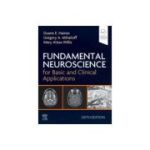
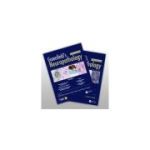
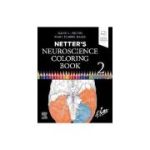
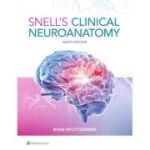
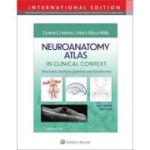





OUR VISITORS OPINIONS